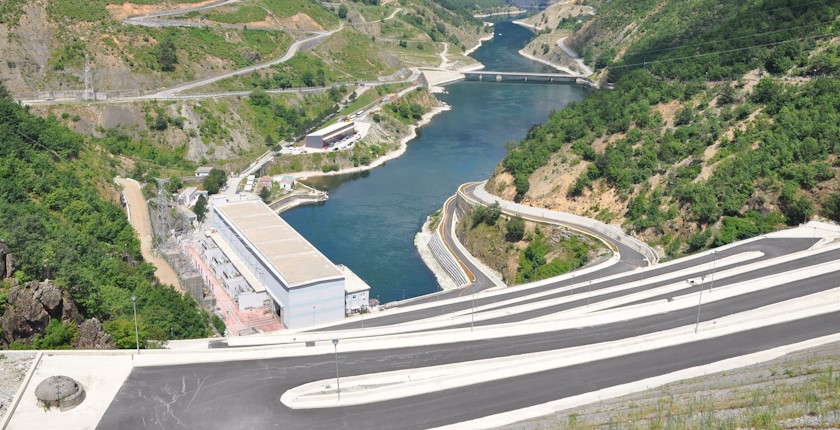
Photo: KESH / Facebook
Albanian state-owned power utility KESH is discussing a pumped storage hydropower project with the EBRD. Pumps would be added between the Fierza and Koman reservoirs. The system would be used for transporting water uphill when electricity demand is lower and release it through turbines when needed.
Pumped storage hydropower plants are complex, expensive and often take up a lot of space. It is still the only conventional energy storage technology. It can also be deployed by adding an upper reservoir to an existing hydroelectric facility. But Albania has a simpler solution in mind: pump water from the reservoir of a hydropower plant to the reservoir of the next one upstream in the same cascade.
Government-controlled hydropower plant operator KESH held a meeting with the European Bank for Reconstruction and Development (EBRD) and the Delegation of the European Union to Albania. According to the company, the international financial institution is supporting the project and the EU would fund it through the Western Balkans Investment Framework (WBIF).
The idea is to install pumps to carry water from the reservoir of the Koman hydropower plant, of 600 MW, to Fierza, which is upstream on the Drin river. Its capacity is 500 MW.
Pumped storage upgrade to improve efficiency in Koman
The company revealed the endeavor in January. It is supposed to improve efficiency at times of stronger flows, too, as Koman has a relatively small reservoir.
The pumping facility would be activated when there is excess electricity in the national system, so that the company can run the water through turbines to make power when needed. The goal of the project is to increase the uptake of solar and wind power plants and improve energy security and grid stability.
Namely, Albania relies almost 100% on hydropower in domestic production. Droughts tend to prompt emergency imports, draining KESH’s financials.
KESH is combining hydropower with photovoltaics in Drin cascade
Albania’s three biggest hydropower plants are on the Drin (Drim) river. They have a combined capacity of 1.35 GW. The Vau i Dejës system of 250 MW, the last in the cascade. Privately owned hydropower units Ashta 1 and 2 are right beneath it.
A project is underway to build a 210 MW hydropower plant, Skavica, upstream from Fierza. Of note, KESH recently picked the contractor for a floating solar power plant at Vau i Dejës, which also hosts a photovoltaic plant on one of its dams. The utility recently signed a joint venture term sheet with Abu Dhabi Future Energy Company (Masdar).
Statkraft is also developing a pumped storage hydropower project in Albania.


















Be the first one to comment on this article.